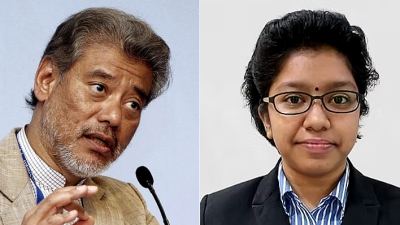
To achieve universal health coverage, people need public healthcare systems providing fair access to decent health care.
This should be an entitlement for all, regardless of means, requiring adequate, appropriate and sustainable financing over the long term.
Appropriate arrangements can help ensure a financially sustainable, effective and equitable healthcare system. However, insurance-based systems — both private and social — not only incur unnecessary costs, but also undermine ensuring health for all.
Private health insurance
Voluntary private health insurance (PHI) is not an acceptable option for both equity and efficiency reasons.
Those with lower health risks are less likely to buy insurance.
Paying the same rate will be seen as benefiting those deemed greater risks, especially the less healthy, often also those less well off.
Hence, PHI premiums are often “risk-rated.” This means those considered greater risks — e.g., the elderly or those with pre-existing conditions — face higher premiums. As these are often unaffordable, many cannot afford coverage.
This is clearly neither cost-effective nor equitable, but also socially risky, especially with communicable diseases. This typically means poorer health outcomes compared to spending.
Also, various insurance premium rate arrangements have different distributional consequences.
“Fee-for-service” reimbursement encourages unnecessary investigations and over-treatment.
This escalates costs, raising premiums, without correspondingly improving health. But limiting such “abuse” requires monitoring, always costly.
Unsurprisingly, many PHI companies use costly “managed healthcare” services to try to limit rising costs due to such abuses.
Thus, Americans spend much more on health than others, but with surprisingly modest, unequal and hardly cost-effective health outcomes.
With PHI, much public expenditure is needed to cover the poor and others who cannot afford the premiums, often also deemed to be at greater risk.
Hence, achieving “health-for-all” in such circumstances would require costly public subsidization of PHI.
Social health insurance
Unlike typically “voluntary” PHI, social health insurance (SHI) is usually mandatory for entire national populations.
Although often espoused with the best of intentions, SHI is invariably costlier due to its limitations and problems.
SHI incurs additional costs of health insurance administration to enroll, collect premiums, ascertain eligibility and benefits, make payments and minimize abuses. Revenue financed universal coverage need not incur such costs.
Compared to PHI, SHI seems like a step forward for countries with weak or non-existent public healthcare arrangements.
But like PHI, SHI encourages over-treatment and cost escalation, as well as costly bureaucratic insurance administration.
Instead of such abuses inherent to insurance systems, a revenue financed health systems would incentivize prioritizing the health and well-being of those it is responsible for, thus emphasizing preventive health.
Such a health system contrasts with insurance systems’ emphasis on minimizing costs for the often unnecessary medical services it incentivizes, instead of improving the population’s health and well-being.
Government subsidies for health insurance, private or social, would inevitably go to the transnational giants which dominate health insurance internationally.
Financing SHI complications
Hence, SHI involves much more per capita health spending, raising it by 3-4%!
But despite being much more costly than revenue-financed systems, there is no evidence health outcomes are improved by switching to SHI from government funding.
Germany’s SHI has been more cost-effective than the US with its PHI. But it is less cost effective than most other economies with revenue-financed healthcare.
Nevertheless, healthcare financing consultants, continue to recommend versions of SHI, although it is clearly not cost-effective, appropriate, efficient or equitable.
SHI schemes remain in some rich countries for specific historical reasons, e.g., Germany’s evolved from its long history of union-provided health insurance. But more recently, even these economies rely increasingly on supplementary revenue financing.
But again, such hybrid financing does not improve cost-effectiveness.
As SHI typically involves imposing a flat payroll tax, it discourages employers from providing proper employment contracts to staff.
SHI is estimated to have reduced formal employment by 8-10% worldwide, and total employment in rich countries by 5-6%!
It is also difficult and costly to collect SHI premiums from the self-employed, or from casual, temporary and informal workers not on regular payrolls.
Also, most working people in developing countries are not in formal employment, with far fewer unionized.
SHI schemes are always difficult to introduce as they would reduce take-home incomes.
In most developing countries, most families cannot afford such pay-cuts. Hence, government revenue would still be needed to cover the uncovered to achieve health for all.
Many SHI proposals also recommend earmarking revenue from new “health” taxes collected.
Such earmarking creates likely conflicts of interest reminiscent of justifications for “sin taxes” on addictive narcotics, smoking, alcohol consumption and gambling.
Will governments perpetuate unhealthy practices and behaviors to secure more tax revenue? Is there an optimum level of smoking or sugar consumption to be allowed, even encouraged, to get such earmarked funding?
Revenue financing
International evidence shows progressive revenue-funded public health financing to be much more equitable, cost-effective and beneficial than SHI.
Hence, moving from revenue-financing to SHI would be a step backwards in terms of both equity and efficiency, or cost-effectiveness.
The late World Bank economist Adam Wagstaff and others have long advocated tax- or revenue-financed health provisioning due to the significant additional costs of managing health insurance systems, both private and social.
Revenue-financed public healthcare financing avoids the many insurance administration expenses incurred by both PHI and SHI.
There will be no more need for such costly payments for unnecessary medical tests, procedures and treatments, and bureaucratic processes to manage insurance procedures and curb abuses, e.g., those associated with “moral hazard.”
Better financing and reorganization of preventive health efforts are needed. Public health programs requiring mass participation, e.g., breast or cervical cancer screening, generally have much better outcomes with revenue-financing compared to SHI.
Better results can be achieved by improving tax-funded healthcare.
More resources need to be deployed to improve preventive and primary healthcare.
Strengthening public health services must include improving staff service conditions, morale and retention rates.
There is nothing inherently wrong with revenue-financed healthcare.
Underfunding is largely due to political choices and fiscal constraints. These are typically due to externally imposed political limits.
Instead of dogmatically insisting on SHI, as is typical of health financing consultants, revenue financing of public healthcare should be reformed, strengthened and improved by:
– increasing and improving budget allocations.
– eliminating waste and corruption with competitive bidding, etc.
– increasing government revenue with fairer taxation, including wealth, “windfall” and deterrent “sin” taxes, e.g., of tobacco and sugar consumption.
(Jomo Kwame Sundaram was an economics professor and United Nations Assistant Secretary-General for Economic Development. Nazihah Noor is a public health policy researcher. She led two reports on health system issues in Malaysia, Social Inequalities and Health in Malaysia and Health and Social Protection: Continuing Universal Health Coverage. She is currently pursuing a PhD in public health in Switzerland.)
ADVERTISEMENT
ADVERTISEMENT






































